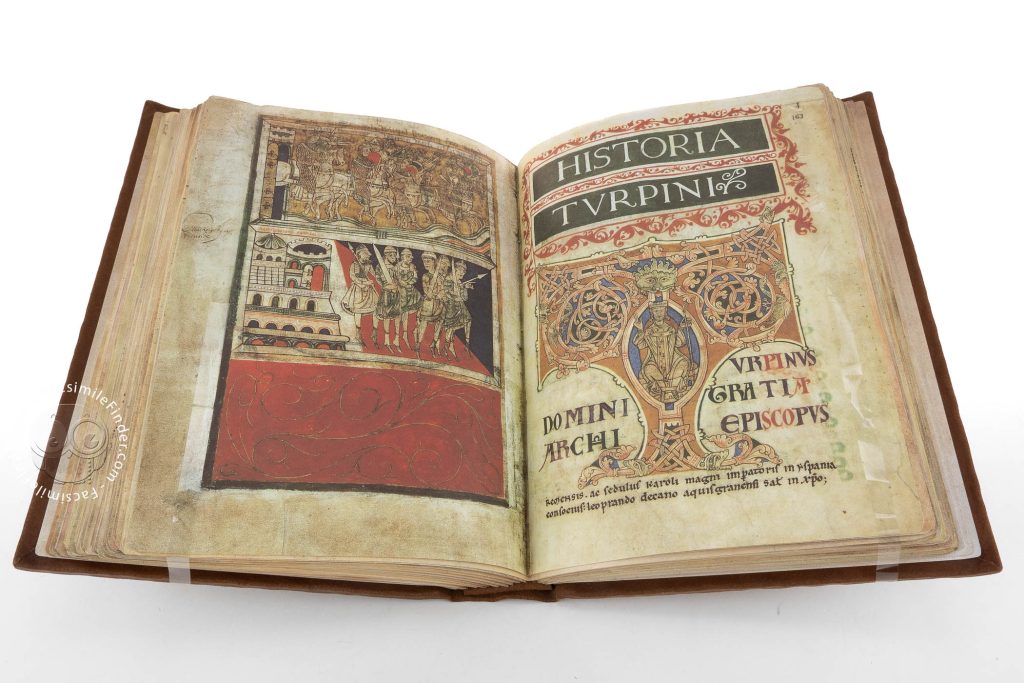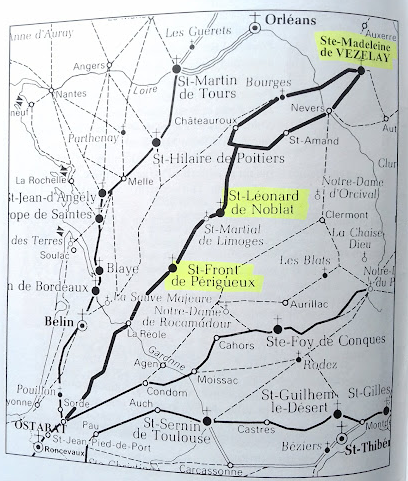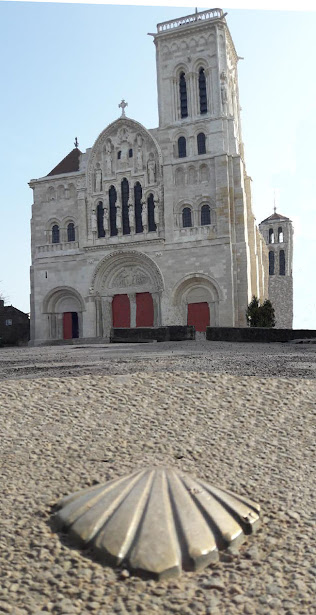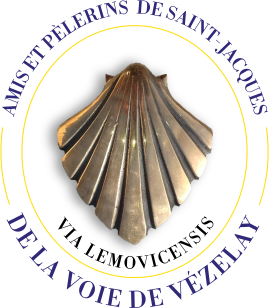

Cited in the Codex Calixtinus as one of the four great pilgrimage routes to Santiago de Compostela, the Vézelay route links the Basilica of Sainte-Madeleine in Vézelay to the Spanish border at Saint-Jean-Pied-de-Port. It crosses France diagonally over nearly 900 kilometers.
The Codex Calixtinus is a 12th century work. It describes the four French routes to Compostela. Its author is unknown! Is it the Poitevin monk, Aimery Picaud or Hugues le Poitevin, monk of Vézelay? In general, the writing is attributed to the first one!
According to this book, three saints are to be venerated along the way:
Saint Mary Magdalene in Vézelay,
Saint Léonard in Noblat,
Saint Front in Périgueux.
The Way of Vézelay benefits from a considerable historical heritage which comes from Vézelay, the eternal hill where the first crusades were preached, and from the exceptional influence throughout Europe of the cult of Saint-Leonard.
The year 2000 saw the publication of a pilgrim’s itinerary for Saint-Jacques on the Vézelay Historic Way ® (Chassain guide known as “yellow guide”)
From Vézelay, two possibilities are offered to the pilgrim:
The two paths meet in Gargilesse in the Indre, land of painters and George Sand.
The landscapes are always admirable, whether it is the plain of Châteauroux or the hills and woods of Morvan. The architecture is varied and some buildings are classified as World Heritage by UNESCO. The road to Vézelay remains an authentic and little frequented path on which you can reflect, meditate and center yourself
If we want to better identify the Voie de Vézelay in relation to other French routes, if we want to try to better understand what gives it a particular personality, we must, it seems to us, become aware of its specificities. clean…
It benefits from a considerable historical heritage: with the Sainte-Madeleine basilica of Vézelay and the cult of Saint-Léonard to the north of Limoges. This aura is due to the tomb of Saint-Léonard de Noblat, and to the religious, cultural and artistic prestige of the Saint-Martial abbey in Limoges.
Without forgetting unique sites such as the cathedrals of Bourges, Nevers and Périgueux, abbeys as famous as those of La Charité-sur-Loire, Déols, Chancelade, Saint-Ferme, La Réole, Saint-Sever.

